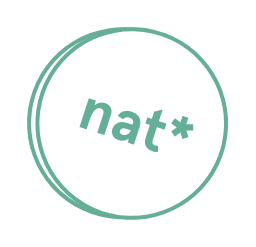Practicing Vietnamese with my Son
Raising a multilingual child is an enriching yet challenging adventure, especially when the language in question isn't one you're fluent in yourself. For many parents like Derek and myself, the decision to teach our son Theo about his cultural heritage through language was a no-brainer. We knew we wanted him to be able to communicate with his extended family and connect with his roots on a deeper level. However, implementing this in our daily lives proved to be more challenging than we initially thought.
We decided early on to use the "one parent, one language" (OPOL) method. I took on the role of speaking to Theo in Spanish, while Derek speaks to him in Vietnamese. Teaching your child a language that you don't speak yourself is absolutely possible, but it does add in an additional layer of complexity.
That's why I am so grateful that we discovered Mommy & Me Vietnamese. Ms. Tran, a wonderful educator who embraces not only the language but the rich tapestry of Vietnamese culture, history, and traditions, became our guide. The beauty of her program is that it welcomes parents into the learning process. It's not just about children learning in isolation; it's a family affair.
Now, a few times a week, Theo and I sit down for our Vietnamese lessons. These sessions are more than just educational—they are a joyful and bonding experience. Ms. Tran has a gift for making learning engaging and relevant. Her videos often include cultural stories, traditional music, and holiday celebrations, which enhance the learning experience by providing context and color to the words we're learning.
This experience has transformed our family life in the most beautiful ways. It's incredibly fulfilling to see Theo embrace his Vietnamese heritage with such enthusiasm. Each new word he learns is a little victory, a sparkle in his eye that speaks volumes about his growing connection to his roots.
To parents who are perhaps hesitating or doubting their ability to raise multilingual children when they aren't fluent in the language themselves, I see you. It's daunting, yes, but not impossible. There are countless resources available that cater to not only teaching children but also supporting parents in their learning. This journey, while challenging, is incredibly rewarding. Seeing your child able to communicate in another language, connecting with their heritage, and becoming a global citizen is worth every bit of effort.
Moreover, the process of learning a new language alongside your child can teach them a valuable lesson about perseverance and lifelong learning. They see their parents embracing new challenges, making mistakes, and continuing to try—what better way for them to learn these essential life skills?
If you're considering embarking on this journey, here are a few tips from our experience:
1. Choose the Right Resources: Find programs, apps, or communities that support both children and adults. It's important to find engaging content that makes the learning enjoyable.
2. Be Consistent: Try to incorporate the language into your daily routine. Consistency is key in language learning.
3. Make It Fun: Use games, songs, and stories. Language learning doesn't have to be a chore; it can be an exciting adventure.
4. Create a Supportive Environment: Encourage the use of the new language at home. Surround your child with books, music, and perhaps even TV shows in that language.
5. Practice Patience: Language learning is a marathon, not a sprint. Celebrate small successes and don't stress about perfection.
As Theo’s vocabulary grows, so does our family’s connection to a part of his identity that would have otherwise been muted without our commitment to this bilingual path. We laugh, we fumble, and most importantly, we learn together. It's a journey that's not only teaching us a new language but also teaching us about each other. I can't wait until Theo starts teaching ME Vietnamese - which I can already tell is just around the corner.
To anyone at the start of this journey, embrace the challenges with an open heart, and remember that you're not only shaping a multilingual child but also creating a world of opportunities for them to explore their own identity and heritage.
